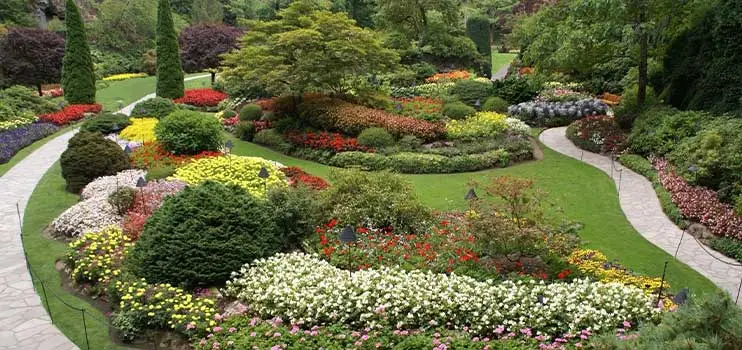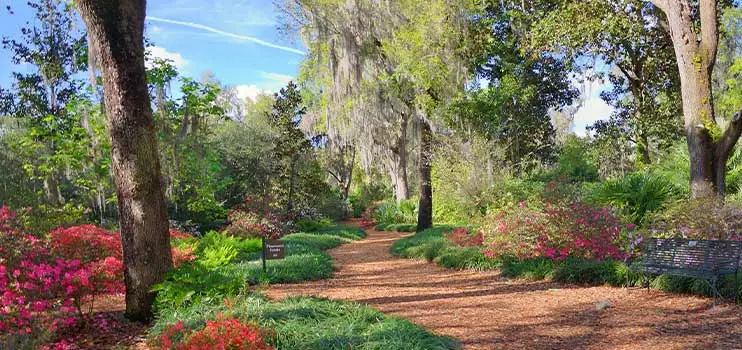Pruning plants and trees is a complex task that many people are under-rate. They avoid getting professional tree trimming services, thinking they can take care of their plants independently. Typically, most folks can handle small scissors and cutting tools. Some can even cut shrubs into clean shapes.
But, no untrained landscaper can make their plants and trees prosper in the long run. They either prune too early, which means no flowers. Some prune too late, often killing their trees in the process. Then, there’s a select group of people who don’t prune their plants at all.
These people end up with overgrown bushes full of insects and hazardously decayed tree branches on their properties. Needless to say, untrained landscapers who don’t get professional tree trimming services expose themselves and their properties to various risks.
Here are three major risks of not investing in professional tree care:
1. Pruning the Wrong Plants at the Wrong Time
When spring arrives, landscapers across the country start itching to get back to their plants. The goal is simple - spruce up their landscapes after the long winter months. However, this time of the month isn’t ideal for tree trimming.
Some trees, plants, and shrubs can handle small trims right after spring. But, most plants during the early months of spring are only readying to bloom and grow. Pruning the wrong plants at the wrong time is a mistake many landscapers make.
As a result, their plants start growing slowly. Some landscapers cut off the flower buds on their plants entirely, leading them to premature death. A professional tree removal expert would exercise great care while pruning trees during spring.
Here are some plants that professional plant and tree pruning experts don’t touch during the spring season:
Birch Trees
If you prune a birch tree early, it will “weep” and release sticky sap all over your landscape. Professional tree trimmers don’t trim or prune birch trees until Autumn.
Maple Trees
Just like birch trees, maple trees also release sticky sap when they’re pruned prematurely. Pruning maple trees when they’re still leaking sap is a big no-no.
Elm Trees
Tree pruning experts follow fixed trimming/pruning schedules for elm trees. This schedule is designed to ensure the health and safety of these trees. Pruning elm trees at the wrong time can make them prone to pest infestations and algal or fungal diseases.
For example, many elm trees suffer from Dutch elm disease (a fungal disease) because they’re pruned at the wrong time.
Clematis
A tree trimming service provider will wait till mid-spring to trim/prune clematis flowers. They wait until the flowers lose their aesthetic appeal. Prune them too soon, and you’ll miss out on the flowers’ prime floral conditions.
Prune them too late, and they’ll die off.
Lilacs
Providers of tree care services receive special training on how to prune early bloomers like lilac flowers. That’s because it’s hard not to cut off the buds of these flowers. Cut off one too many buds, and your lilac plants won’t yield any flowers.
That’s why strategically and scientifically timing these pruning sessions is very important.
Forsythia
Another early bloomer, the beautiful forsythia flower plant has very tender branches.
Aggressive or careless pruning can damage these plants’ branches and buds.
If you’re worried about tree trimming service costs and don’t want to regularly hire professional arborists – no problem. Hire these professionals once or twice. Ask them to teach you when to prune your plants and when to leave them alone.
2. Not Recognizing the Signs of Tree Disease
Professional arborists and tree trimming experts understand the signs of tree and plant health. They can recognize the signs that a specific plant or tree is suffering from a disease. Before these tree diseases become major issues, they give the trees appropriate treatment.
On the other hand, untrained, inexperienced “landscapers” are often oblivious to their trees’ plight.
Here’s how they end up exposing their trees and plants to diseases:
- A wound occurs in the plant or tree due to incorrect pruning, wind damage, or other reasons.
- Fungus or algae enters the wound.
- The plant starts losing its natural colors as the fungus starts rotting its roots.
- The fungus produces enzymes by decaying the plant/tree.
- As the plant loses its nutrients, it weakens, and its trunk or limbs start losing their strength.
- Limbs start dying, causing the plant to take an odd asymmetrical shape.
- Branches and twigs start littering the ground under the plant.
- The fungus or algae begins reproducing, and this cycle repeats.
Pretty soon, the whole plant is disease-ridden. The only option landscapers have is to chop it off entirely.
Now, here’s how a professional tree trimming service provider would handle this situation:
- The professional tree care expert would always watch out for signs of fungal or algal diseases in plants.
- These signs include – stunted growth, branch dieback, premature autumn leaf coloration, and severe loss of leaves and branches.
- They identify the early symptoms to detect the origin of the disease – fungi or algae. Then, they give the diseased plants, trees, and shrubs appropriate treatment.
If the whole tree or plant is infected, they completely eliminate it from the soil. They make sure surrounding trees and plants are not exhibiting similar symptoms.
Needless to say, professional tree trimming experts are far better equipped to deal with plant and tree diseases. Even when plants appear healthy, these experts can detect signs of disease or infestation.
3. Topping Trees
Topping a tree is the process of cutting its top off. Professional tree trimming service providers never top trees. They only trim its lateral branches, cutting down its width, not its height. Trees can grow tall even when they’re in small, allotted spaces.
Cutting their tops off doesn’t make sense, but inexperienced landscapers often make this mistake. By topping their trees, they send them into shock mode. Such trees are very accident-prone. Professional tree care experts never top trees.
Landscapers can easily avoid these risks by calling in professionals. Getting tree trimming services even once or twice can help you learn a lot about pruning and tree maintenance. If you have a landscape that needs specialized care, Contact Emerald Tree and Shrub Care now. Our tree care experts can help you keep your trees healthy and growing. They’ll even guide you on how to take care of your trees.










